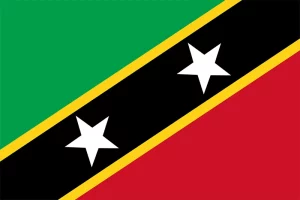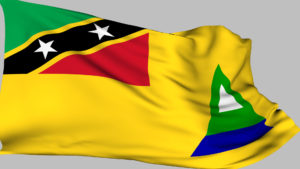Nevis
 Nestled along the inner arc of the Caribbean’s Leeward Islands, the island nation of Nevis is quickly becoming one of the region’s most exclusive destinations.
Nestled along the inner arc of the Caribbean’s Leeward Islands, the island nation of Nevis is quickly becoming one of the region’s most exclusive destinations.
Part of the twin island Federation of St. Kitts & Nevis, the island of Nevis is a sovereign nation, with a separate government headed by the Premier of Nevis. Along with its beautiful beaches and welcoming people, Nevis offers one of the oldest, most successful Citizenship by Investment programs in the world.
The 36 square mile Island is one of the smallest in the chain, yet boasts some of the most captivating scenery in the region. Known for its striking beauty, tranquil beaches and its most notable feature, Nevis Peak, a dormant volcano reaching 985 meters at its peak, the island nation is home to a population of only 12,100 people. With its tropical climate and average high temperature of 85°F/30°C, the pleasant weather is one of the island’s most alluring features. The lush rain forest, which adorns the majority of Nevis Peak, is often covered in clouds making the island much less arid than its neighbors, St. Kitts and Anguilla.
 First sighted by Christopher Columbus in 1493, the island had long been inhabited by the indigenous Amerindian people. European settlement of the Island came much later, in 1628, with the arrival of British settlers. The island flourished under British rule with sugarcane becoming its most successful cash crop and, in fact, would later be known as “The Mother Colony” because of its distinction as the heart of the British sugar trade in the West Indies. Today, Nevis’ major source of revenue is tourism and it is estimated that between 40,000 and 50,000 people visit the island annually.
First sighted by Christopher Columbus in 1493, the island had long been inhabited by the indigenous Amerindian people. European settlement of the Island came much later, in 1628, with the arrival of British settlers. The island flourished under British rule with sugarcane becoming its most successful cash crop and, in fact, would later be known as “The Mother Colony” because of its distinction as the heart of the British sugar trade in the West Indies. Today, Nevis’ major source of revenue is tourism and it is estimated that between 40,000 and 50,000 people visit the island annually.
Long part of the British colony of the Leeward Islands, St. Kitts & Nevis became a self-governed state associated with Great Britain in 1967. The Federation of St. Kitts & Nevis gained full independence from Great Britain in September 1983, and has since performed as one of the most well-functioning democracies in the region.
